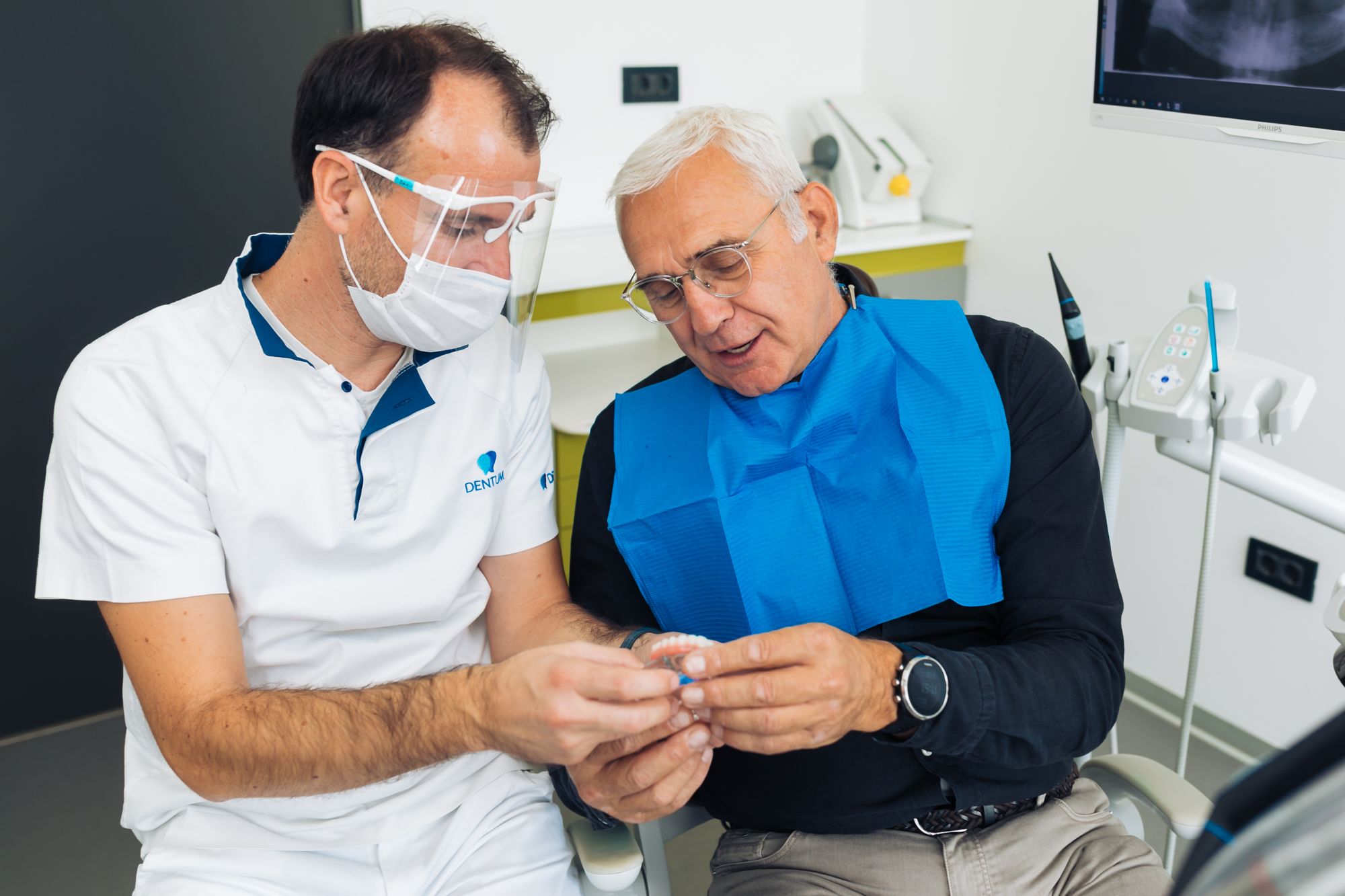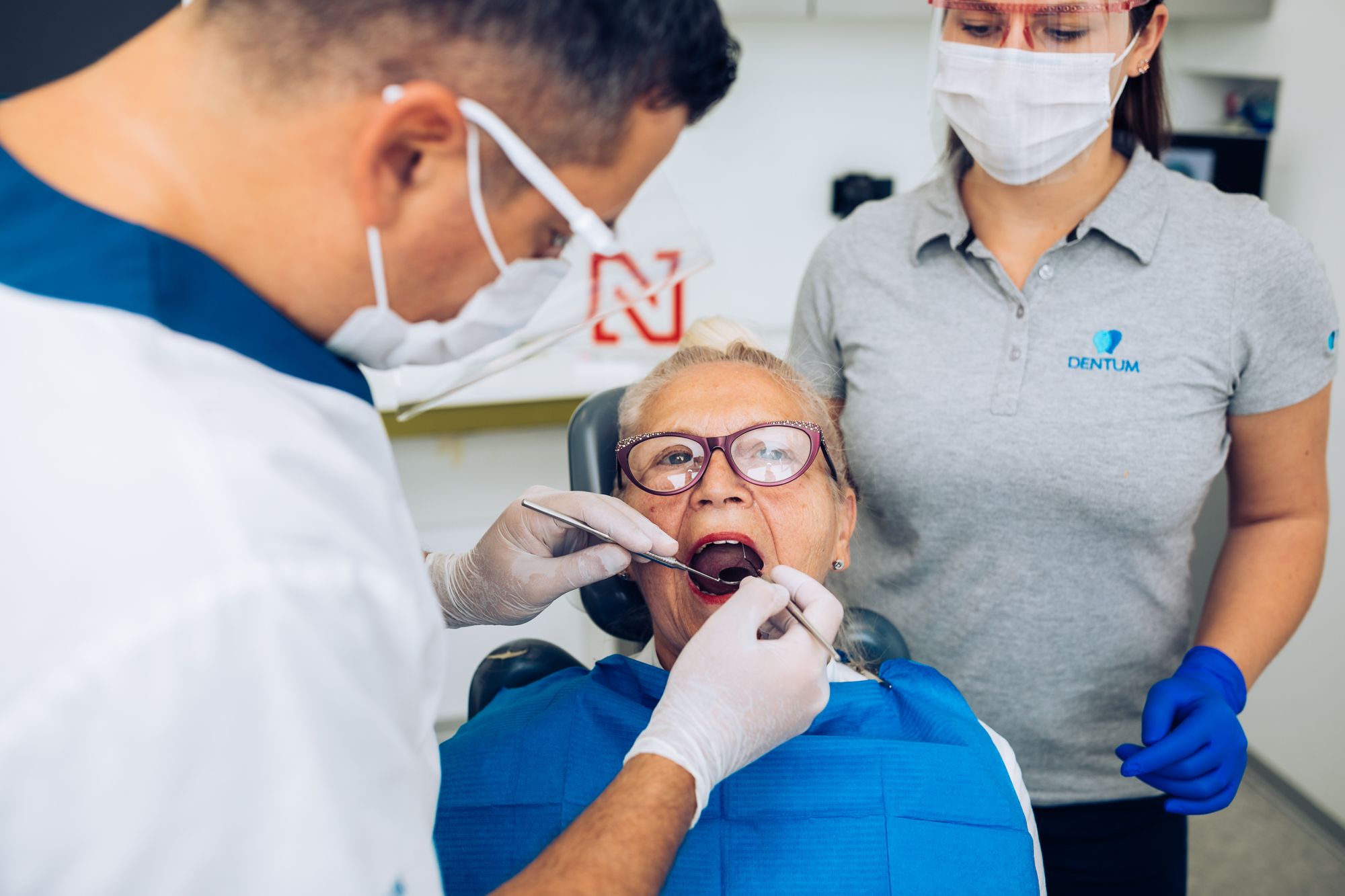
Conventional implants or zygomatic implants?
Once bone mass is gone, it cannot be reversed, thus rehabilitation of the teeth may be needed. If you do not replace the missing tooth with the replacement tooth, then dental occlusion and the domino effect can cause a drastic change to the overall dynamics of your teeth and mouth.
In cases when patients who are candidates for zygoma implants decided to undergo bone augmentation and classic implant and prosthetic rehabilitation, a large quantity of replacement bone is usually required, meaning that recovery and healing takes longer – at least one year – and requires two separate surgical procedures. With zygoma implants, we are able to fully restore the patient’s teeth at one time, with no need for a long recovery and potential complications that can accompany bone augmentation.
Generally, there are two surgical alternatives to achieve fixed rehabilitation for completely edentulous patients, such as grafting and graft-less solution. For patients with insufficient intra-oral donor sites, oral surgeons prefer graft-less solutions using zygomatic implants. Unlike conventional implants, zygomatic implants are safe and effective options for the management of severely resorbed edentulous maxillae and atrophic jaws. Reducing the time between surgery and fixed restoration, and offering a broad range of options for prosthetics, zygomatic implants allow a quick return to normal life and increases comfort and quality of life for the patients.

A successful implementation of the quad zygoma technique requires advanced surgical skills and dedicated training. This procedure requires a highly skilled clinical surgeon, who can perform the entire implant and prosthetic therapy. Unlike other methods, zygoma implants and a fixed prosthetic solution do not require any technological solutions performed outside the patient’s month, which then prolong the course of the treatment overall. For fixed procedures on zygoma implants, it takes just 24 hours from the operation to the first installation of the fixed teeth.
Zygoma implants are also a solution for patients for whom classical implants and bone augmentation were not successful. Before the appearance of the technologically advanced zygoma implant solution, these patients were doomed to wear dentures. However, they too now have a new opportunity for fixed teeth and a beautiful smile thanks to the zygoma implants.
What is the zygomatic implant system?
The zygoma anatomy-guided technique was introduced as a personalized surgical procedure in which the placement of the implants depends on different anatomical features, with special attention given to the curvature of the maxillo-zygoma complex.
A perfect zygomatic implant system will bring terrible results in untrained hands. A not-so-good zygomatic implant system can provide excellent results if handled correctly. Find out more about using state-of-the-art zygomatic implant systems:
Dr. Miroslav Piljagić: “The zygomatic implant solution allows the surgeon to achieve his goal during the surgery, providing ideal solutions for each clinical situation, with good mechanical and biological performance. It must promote biological longevity and optimal prosthetic outcome.”
The zygomatic implant system features to best solve our clinical needs:
- Zygomatic Implant Lengths
The sizes of the zygomatic implants to be used in each case do not depend only on each patient's anatomy but also on the implants' three-dimensional positioning.
The zygoma implants range from 30–65 mm in length, while classical implants are 15–18 mm long. This enables a broader application among a wider spectrum of patients, even with strongly pronounced bone deficiency. - Zygomatic Implant Design & Surface
It's here where we need to pay attention to the detail of an ideal apex for the zygomatic implant. It needs to promote good insertion torque, but it needs to be designed for corticalised bone. That means we need less aggressive threads. - Zygomatic Implant Surface Treatment
Before thinking about whether surface treatment is required in zygomatic implants, we must first ask ourselves about the type of bone into which we are inserting the implant. What do we seek with osseointegration? Anaesthetic, functional and stable rehabilitation over time. - Zygomatic Implants Prosthetics components
The final prosthetic solution can be made from different materials. The composite has a milled construction made of titanium or Bio Hpp material, on which layered composite crowns are upgraded. The composite has several advantages and one of the biggest is that it can be aesthetically individualized in order to achieve the desired natural shape of the crown. Also, unlike ceramics, it is less prone to cracking because it is less rigid as a material. - Scientific publications
The success rate is over 98% and they have been used for more than 40 years. The reason for this high success is also due to the better blood supply in the zygomatic bone, which enables better osseointegration of the implant.
At Dentum, we use the Neodent® Zygoma GMTM from The Straumann® group. The Neodent® Zygoma GMTM complements the standard implant system for achieving immediate loading protocol in fixed full-arch restoration. The solution combines the Grand Morse™ mechanical strength and the versatile prosthetic solutions. One prosthetic connection for all Grand Morse™ Implants: ease of use.
Features and Benefits

Designed to achieve high primary stability for immediate function, the Straumann® zygomatic implant systems allow patients to have a fixed provisional prosthesis fitted immediately after surgery, resulting in shorter treatment time. The precision-engineered component removes the risks associated with ill-fitted third-party abutments and eliminates the risk that unclean and non-biocompatible components encounter soft tissue. The Straumann® zygomatic implant systems have an unthreaded implant body designed to interface with the soft tissue, and for extra maxillary placement, the coronal part of the implant provides bone support.
The Straumann® zygomatic implants have benefits for both the patient and clinician. As the prosthesis is supported by the implants and not by the soft tissue as the surgical site, the patient feels more confident with the stability of the prosthesis. The immobility of prostheses allows for more confident speech and enhanced appreciation of foods due to lack of palatal coverage.
The zygomatic implant has become the implant of choice for cases with a severely resorbed maxilla. Without this implant, many patients would otherwise require invasive grafting procedures to establish adequate bone volume for the placement of conventional implants. Zygomatic implants help avoid grafting and shorten treatment time, with significant post-operative improvements in function and aesthetics.
If you wish to know more about zygomatic implants, come in for a free first examination and consultation with Dr. Piljagić at our clinic.
Book your free first examination and consultation online at:
email: smile@dentum.com
telephone: 020 376 939 73